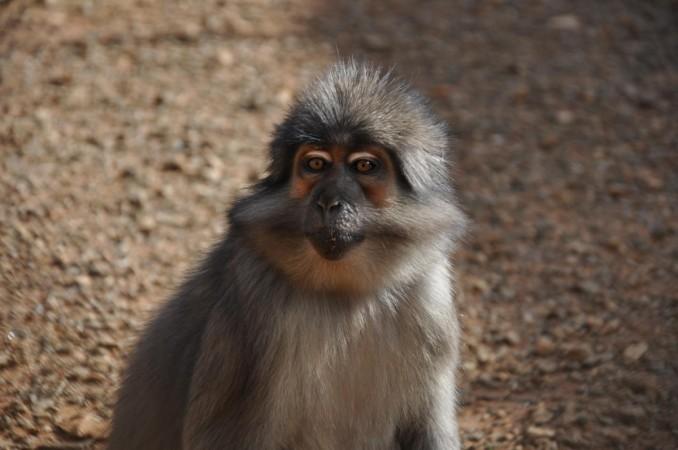
Sooty mangabey, a medium-sized monkey species known for its tail that is longer than its body, may help scientists develop the ultimate weapon to better fight AIDS.
According to scientists at the Yerkes National Primate Research Center, sooty mangabeys are able to handle infection by SIV, a relative of HIV, and avoid developing AIDS-like disease. After sequencing the sooty mangabey genome and comparing with the genome of humans and other apes, scientists spotted clues that may help people infected with HIV.
Scientists believe that once they figure out how SIV and sooty mangabeys co-exist without AIDS, it will be easier to improve long-term care of individuals infected with HIV, reduce mother-to-infant transmission of the virus and finally develop a vaccine against HIV. The new study was published on the journal Nature on Wednesday.
"We are taking advantage of an evolutionary experiment that took place over many thousands of years, revealing how it is possible to be infected with SIV and not progress to AIDS," Guido Silvestri, chief of Microbiology and Immunology at the Yerkes Research Center at Emory University, and the lead researcher of the study, said in a statement.
Sooty mangabeys, as well as some other monkey species like drills and African green monkeys, are natural hosts for SIV. These apes are capable of maintaining healthy levels of immune cells even after being infected by the virus, and therefore, they do not progress to AIDS.
"We found two big differences in proteins of the immune system in the sooty mangabey genome, which we hope will help us better understand why sooty mangabeys avoid AIDS despite SIV infection," David Palesch, a Yerkes postdoctoral fellow and the study's co-author, said in the statement.
One of the major differences is a non-functional adhesion molecule, called ICAM2, on immune cells in sooty mangabeys -- something that is specific to this particular monkey species.
In addition, sooty mangabeys also have an alteration of the TLR4 protein, which impairs its function. TLR4, which is part of the natural immune sensing, gets activated in response to components of bacterial membranes.
While previous research works by Silvestri and his team compared the immune systems of sooty mangabeys and other natural SIV hosts with HIV-infected humans, the new study compares whole genome sequencing and identifies pathways that can lead to AIDS resistance.
"This finding is intriguing, because damage to intestinal barriers and bacterial release contributes to chronic immune activation, which is associated with AIDS progression in HIV-infected humans and SIV-infected non-natural hosts," Silvestri said.









!['Had denied Housefull franchise as they wanted me to wear a bikini': Tia Bajpai on turning down bold scripts [Exclusive]](https://data1.ibtimes.co.in/en/full/806605/had-denied-housefull-franchise-they-wanted-me-wear-bikini-tia-bajpai-turning-down-bold.png?w=220&h=138)



